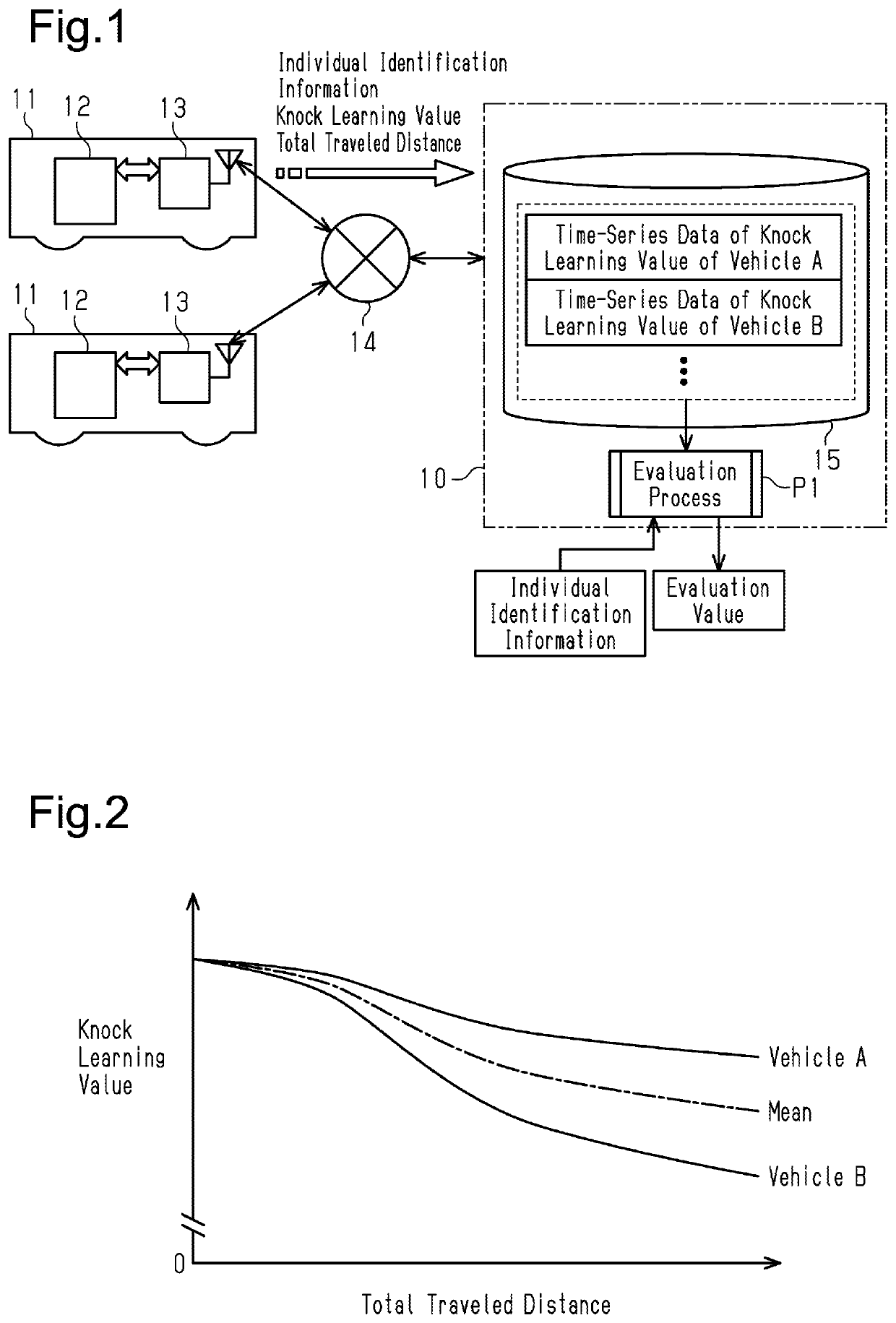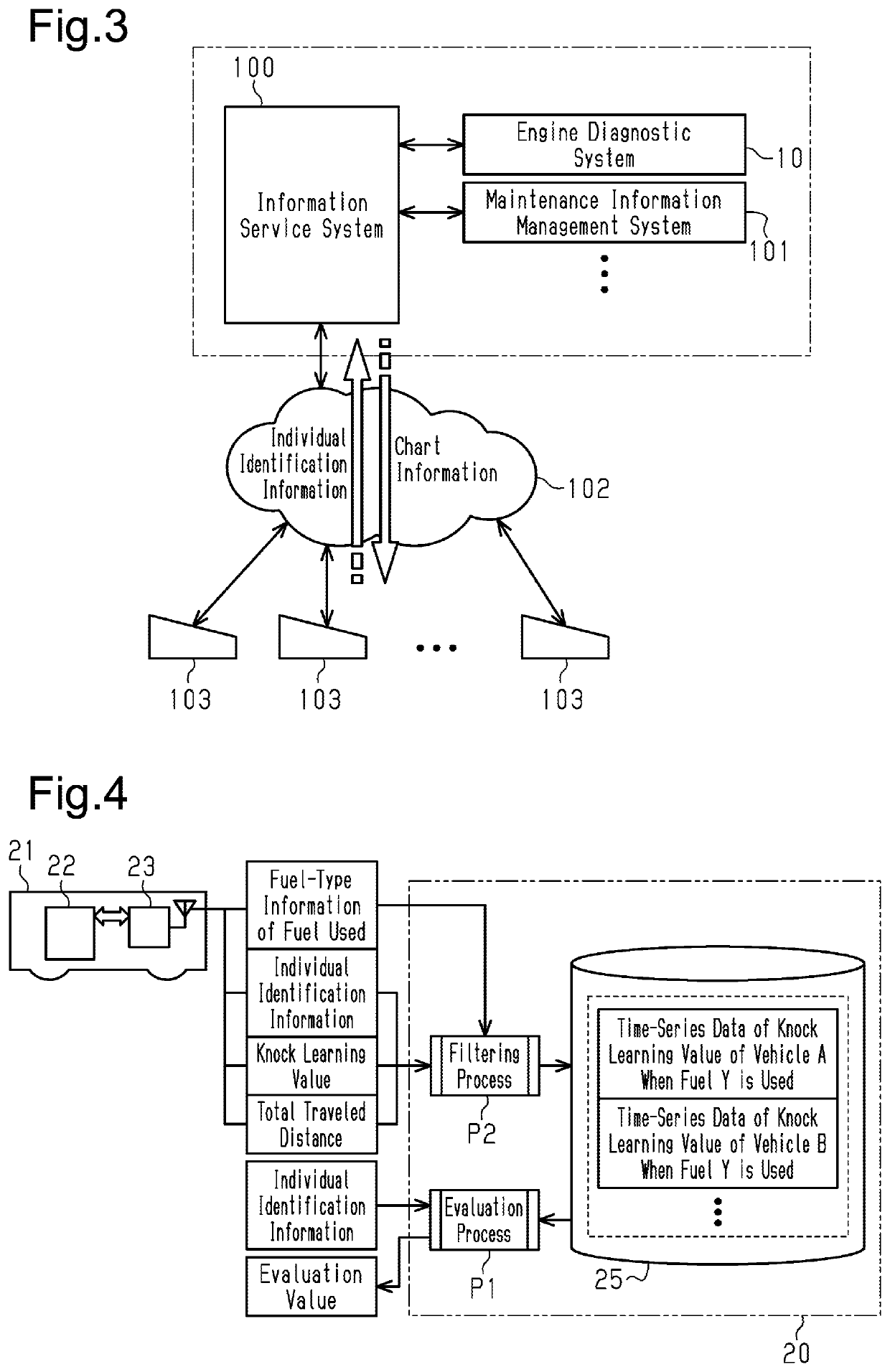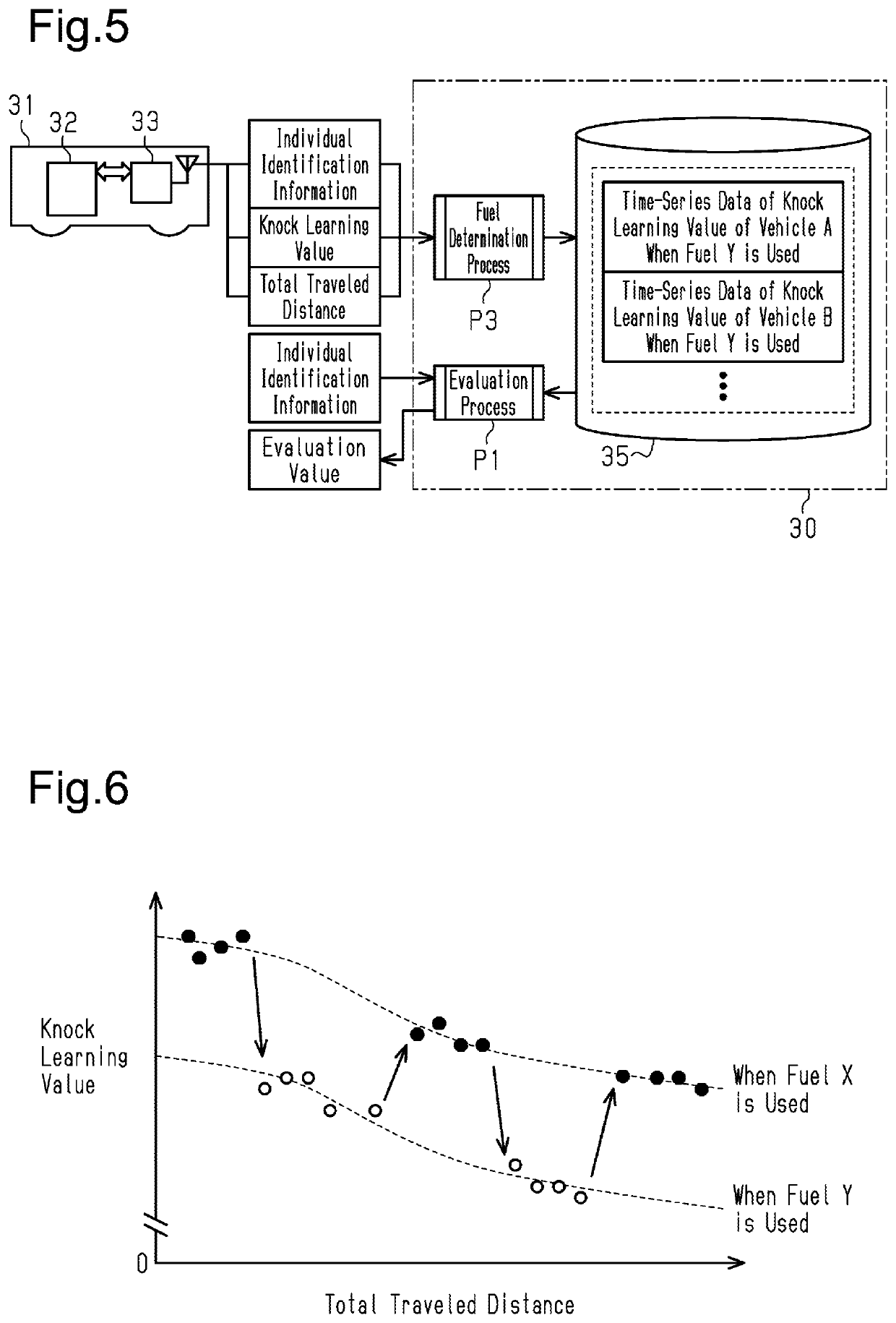Engine diagnostic system and engine diagnosing method
a technology for engine diagnostics and diagnostic systems, applied in the direction of machines/engines, electrical control, mechanical equipment, etc., can solve the problems of engine deterioration, engine deterioration, and engine deterioration gradually, so as to reduce engine knocking
- Summary
- Abstract
- Description
- Claims
- Application Information
AI Technical Summary
Benefits of technology
Problems solved by technology
Method used
Image
Examples
first embodiment
[0026]An engine diagnostic system 10 and an engine diagnosing method according to a first embodiment of the present disclosure will now be described with reference to FIGS. 1 to 3.
[0027]First, the configuration of the engine diagnostic system 10 according to the present embodiment will be described with reference to FIG. 1. The engine diagnostic system 10 is a computer system that manages a database 15. That is, the engine diagnostic system 10 is configured as a system that diagnoses the deterioration degree of an engine 12 mounted on each of vehicles 11 of the same model under management.
[0028]Each vehicle 11 under management of the engine diagnostic system 10 includes a control unit 13, which controls a variety of characteristics of the vehicle 11 including the engine 12. The control unit 13 includes a wireless transmission function and is capable of transmitting and receiving data to and from the engine diagnostic system 10 through a mobile communication network 14.
[0029]The cont...
second embodiment
[0046]An engine diagnostic system 20 and an engine diagnosing method according to a second embodiment of the present disclosure will now be described in detail with reference to FIG. 4. In the present embodiment, like or the same reference numerals are given to those components that are like or the same as the corresponding components of the first embodiment, and the detailed description will be omitted.
[0047]Like the first embodiment, the engine diagnostic system 20 of the present embodiment shown in FIG. 4 is configured as a computer system that manages a database 25. Like the case in the first embodiment, the engine diagnostic system 20 of the present embodiment also executes the evaluation process P1, which computes the evaluation value indicating the deterioration degree of the engine using the time-series data of the knock learning value collected in the database 25.
[0048]An engine 22 of a vehicle 21 under management of the engine diagnostic system 20 of the present embodiment...
third embodiment
[0052]An engine diagnostic system 30 and an engine diagnosing method according to a third embodiment of the present disclosure will now be described in detail with reference to FIGS. 5 and 6. In the present embodiment, like or the same reference numerals are given to those components that are like or the same as the corresponding components of the above-described embodiments, and the detailed description will be omitted.
[0053]Like each of the above embodiments, the engine diagnostic system 30 of the present embodiment shown in FIG. 5 is configured as a computer system that manages a database 35. The engine diagnostic system 30 of the present embodiment also executes the evaluation process P1, which is the same as the cases in the above embodiments. That is, the evaluation process P1 computes the evaluation value indicating the deterioration degree of the engine using the time-series data of the knock learning value collected in the database 35.
[0054]Additionally, an engine 32 of a v...
PUM
 Login to View More
Login to View More Abstract
Description
Claims
Application Information
 Login to View More
Login to View More - R&D
- Intellectual Property
- Life Sciences
- Materials
- Tech Scout
- Unparalleled Data Quality
- Higher Quality Content
- 60% Fewer Hallucinations
Browse by: Latest US Patents, China's latest patents, Technical Efficacy Thesaurus, Application Domain, Technology Topic, Popular Technical Reports.
© 2025 PatSnap. All rights reserved.Legal|Privacy policy|Modern Slavery Act Transparency Statement|Sitemap|About US| Contact US: help@patsnap.com



